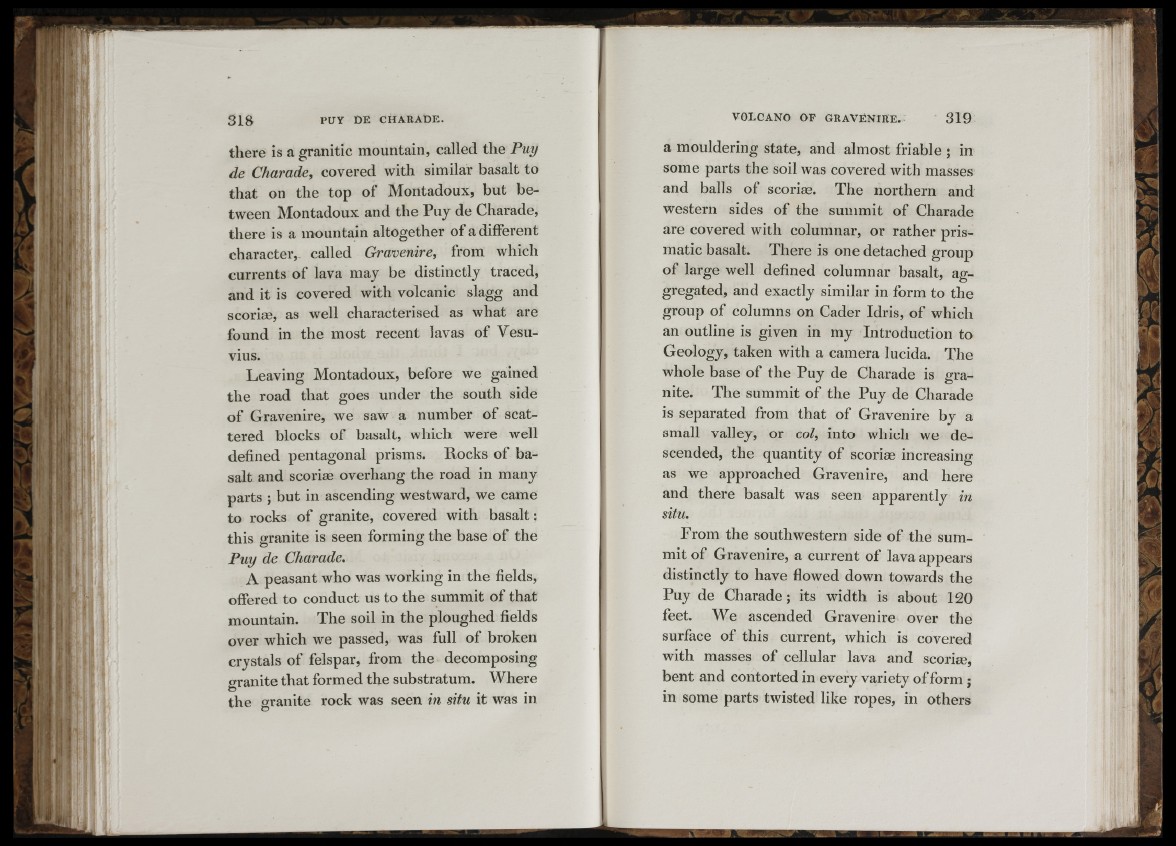
there is a granitic mountain, called the Puy
de Charade, covered with similar basalt to
that on the top of Montadoux, but between
Montadoux and the Pay de Charade,
there is a mountain altogether of a different
character, called Gravenire, from which
currents of lava may be distinctly traced,
and it is covered with volcanic slagg and
scoriæ, as well characterised as what are
found in the most recent lavas of Vesuvius.
Leaving Montadoux, before we gained
the road that goes under the south side
o f Gravenire, we saw a number of scattered
blocks of basalt, which were well
defined pentagonal prisms. Rocks of basalt
and scoriæ overhang the road in many
parts ; but in ascending westward, we came
to rocks of granite, covered with basalt:
this granite is seen forming the base of the
Puy de Charade.
A peasant who was working in the fields,
offered to conduct us to the summit of that
mountain. The soil in the ploughed fields
over which we passed, was full of broken
crystals of felspar, from the decomposing
o-ranite that formed the substratum. Where to
the granite rock was seen in situ it was in
a mouldering state, and almost friable ; in
some parts the soil was covered with masses
and balls of scoriæ. The northern and
western sides of the summit of Charade
are covered with columnar, or rather prismatic
basalt. There is one detached group
o f large well defined columnar basalt, aggregated,
and exactly similar in form to the
group of columns on Cader Idris, of which
an outline is given in my Introduction to
Geology, taken with a camera lucida. The
whole base of the Puy de Charade is granite.
The summit o f the Puy de Charade
is separated from that of Gravenire by a
small valley, or col, into which we descended,
the quantity of scoriæ increasing
as we approached Gravenire, and here
and there basalt was seen apparently in
situ.
From the southwestern side o f the summit
of Gravenire, a current of lava appears
distinctly to have flowed down towards the
Puy de Charade; its width is about 120
feet. We ascended Gravenire over the
surface of this current, which is covered
with masses of cellular lava and scoriæ,
bent and contorted in every variety of form j
in some parts twisted like ropes, in others
î i
■M'f